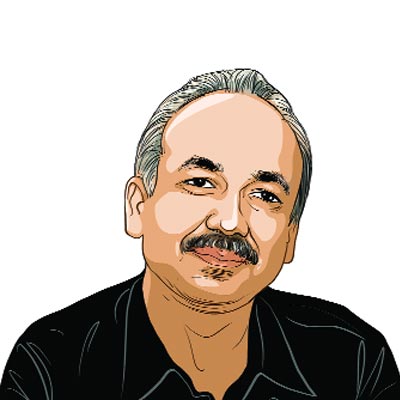Opinion In Nepal politics, the return of the king
In 2008, when he was deposed, it was unthinkable that Gyanendra Shah would have a significant role to play. But instability, corruption allegations have changed that.
 Former Nepal King Gyanendra Shah Saturday received a grand welcome in Kathmandu on his return from Pokhara after nearly two months stay in the tourist city. (PTI Photo)
Former Nepal King Gyanendra Shah Saturday received a grand welcome in Kathmandu on his return from Pokhara after nearly two months stay in the tourist city. (PTI Photo) “I am leaving our crown and sceptre in the safe custody of the people.” These were the parting words of Gyanendra Shah as he left the Narayanhiti Royal Palace as a commoner, following the abolition of the monarchy by Nepal’s Constituent Assembly in May 2008. He vowed not to leave his motherland and fellow Nepalis, saying that doing so would be unthinkable. The situation was too hostile then for him to foresee or even remotely imagine the return of a dethroned king to the throne. But this Sunday, almost 17 years since, thousands poured into the streets of Kathmandu seeking just that, in order to “save” the country at the call of the pro-monarchy Rastriya Prajatantra Party and like-minded outfits.
They had come to welcome him upon his return from Pokhara, a tourist city, following a family trip. His supporters — seemingly far greater in number than government agencies anticipated — paraded the main thoroughfares of the capital, chanting slogans in favour of the monarchy. The welcome was clearly political. It came weeks after Shah’s appeal to the people on February 18, Nepal’s Democracy Day, to support him for national unity, progress and prosperity. He expressed his frustration over how things had deteriorated in the republic, reproaching the political parties while emphasising that a reconciliatory approach is needed to make the country stronger. The major parties met this with either silence or harsh criticism, warning Shah against a comeback attempt. However, the outpouring of people on March 10 seems to have emboldened the former king, which risks triggering a political confrontation. Political leaders, mainly from the “big three” — the Nepali Congress, the Communist Party of Nepal (Unified Marxist-Leninist) and the Maoists — have become unpopular and carry the taint of corruption allegations and refusing to submit to credible investigations.
When Shah took over direct rule in February 2005 with a promise to restore power to the political parties within three years after containing the Maoist insurgency that had already claimed 17,000 lives, he was met with public protests. India, worried about a spillover effect in the region, successfully brought the Maoists and the seven other major political parties together. Yet, in the course of the following two decades, Nepal as a republic has been saddled with seemingly corrupt regimes, with almost all prime ministers facing allegations. This is at a time when the country faces an external debt of around 60 trillion rupees. The authority of the state has vastly eroded, and the Nepali passport has rapidly lost its strength. Parallel to this decline, the last monarch faced humiliation at home. His security was downgraded and his privileges as a former head of state were rescinded.
C P Mainali, a prominent communist leader, has come out in favour of the reconciliatory approach put forth by Shah. Another communist leader, Narayanman Bijukchee, head of the Nepal Mazdoor Kisan Party, said it was time the country began thinking about the monarchy, saying, “A school needs a principal, why wouldn’t a country need a head?” His words carry that much more weight as he was one of the eight signatories in the mediation facilitated by India for a republican Nepal. All this is taking place when Prime Minister K P Sharma Oli, with his totalitarian tendencies, has earned more enemies than ever before. Oli’s one-time nearest political ally and follower in the party and second president of the republic, Bidya Devi Bhandari, has emerged as a formidable competitor to Oli.
However, Nepal’s internal politics has not remained completely internal. Although India has lost some of its clout, Delhi’s concern over China making inroads is apparent. On Mahashivaratri, also the foundation day of the Nepal Army, six retired generals of the Indian Army came to attend the programme. With the recruitment of the Gorkhas to the Indian army stalled since 2022 following the introduction of the Agnipath scheme, the mass presence of Indian generals was perhaps a message that, at the very least, this historical and traditional tie must be preserved. Nepal’s security agencies, mainly the Army, have in an unprecedented occurrence expressed dissatisfaction over internal problems and the risks of possible anarchy under the current political system — their concerns echoing the former king.
How Nepal’s political parties deal with the current situation and the former king, and how they respond to the public’s concerns, will set the course for future politics.
The writer is the Kathmandu-based contributing editor for The Indian Express






